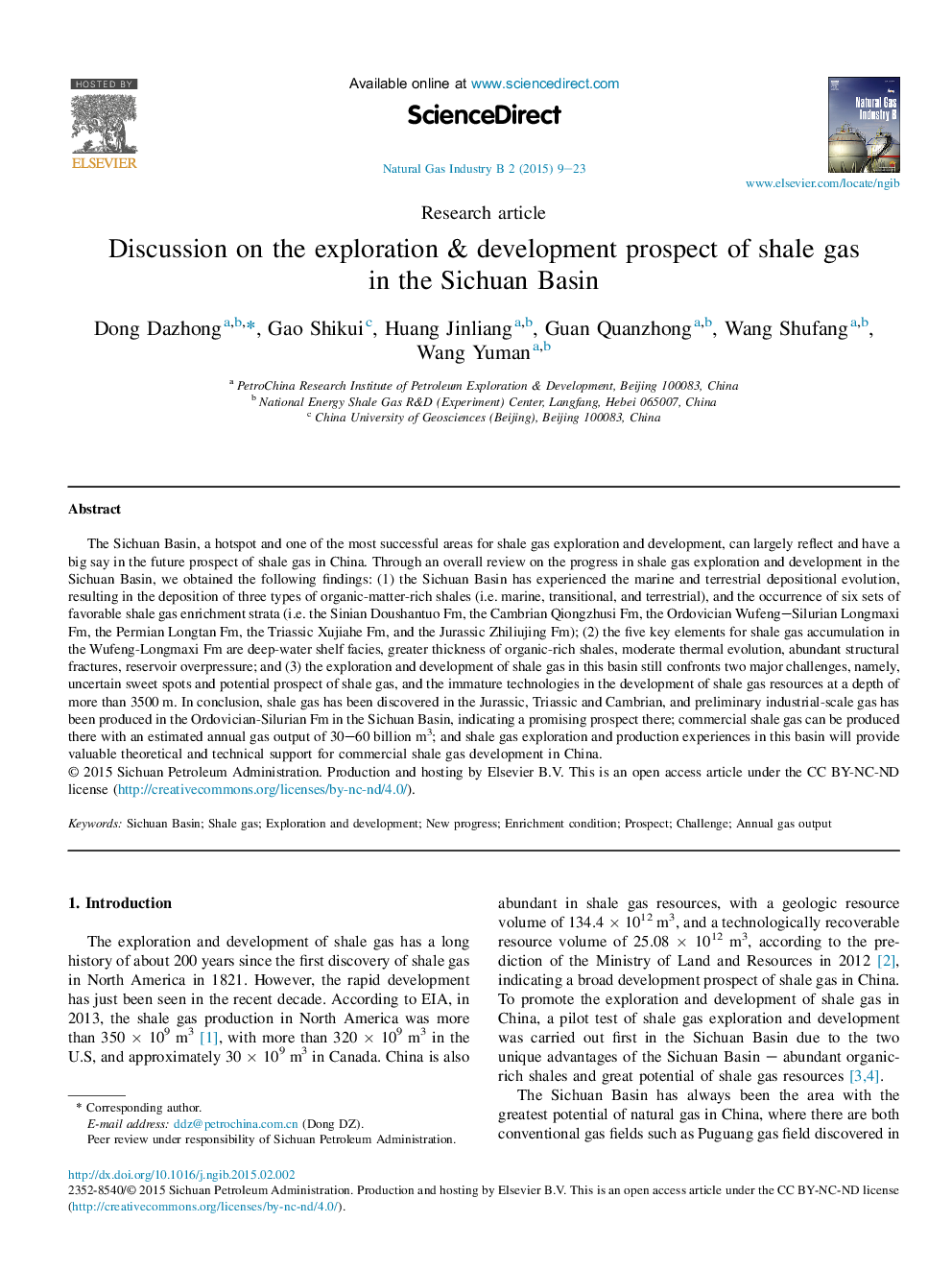| Article ID | Journal | Published Year | Pages | File Type |
|---|---|---|---|---|
| 1747797 | Natural Gas Industry B | 2015 | 15 Pages |
The Sichuan Basin, a hotspot and one of the most successful areas for shale gas exploration and development, can largely reflect and have a big say in the future prospect of shale gas in China. Through an overall review on the progress in shale gas exploration and development in the Sichuan Basin, we obtained the following findings: (1) the Sichuan Basin has experienced the marine and terrestrial depositional evolution, resulting in the deposition of three types of organic-matter-rich shales (i.e. marine, transitional, and terrestrial), and the occurrence of six sets of favorable shale gas enrichment strata (i.e. the Sinian Doushantuo Fm, the Cambrian Qiongzhusi Fm, the Ordovician Wufeng–Silurian Longmaxi Fm, the Permian Longtan Fm, the Triassic Xujiahe Fm, and the Jurassic Zhiliujing Fm); (2) the five key elements for shale gas accumulation in the Wufeng-Longmaxi Fm are deep-water shelf facies, greater thickness of organic-rich shales, moderate thermal evolution, abundant structural fractures, reservoir overpressure; and (3) the exploration and development of shale gas in this basin still confronts two major challenges, namely, uncertain sweet spots and potential prospect of shale gas, and the immature technologies in the development of shale gas resources at a depth of more than 3500 m. In conclusion, shale gas has been discovered in the Jurassic, Triassic and Cambrian, and preliminary industrial-scale gas has been produced in the Ordovician-Silurian Fm in the Sichuan Basin, indicating a promising prospect there; commercial shale gas can be produced there with an estimated annual gas output of 30–60 billion m3; and shale gas exploration and production experiences in this basin will provide valuable theoretical and technical support for commercial shale gas development in China.
